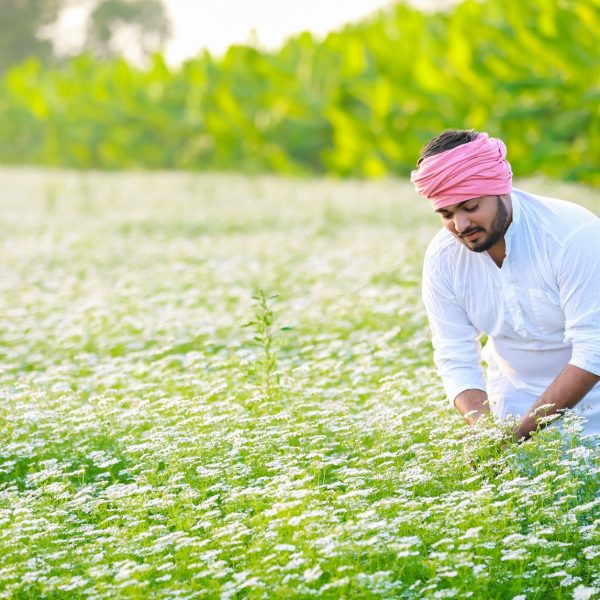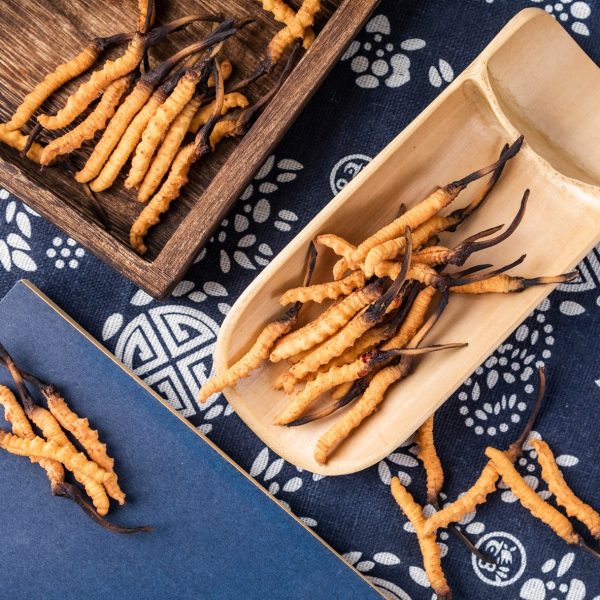One of the most common presentations to herbal practice is persistent tiredness. We explore the roots of fatigue and herbal treatments.
Understanding fatigue
One of the most common presentations to herbal practice is persistent tiredness, “tired all the time”. This is however often accompanied by other distressing symptoms: compromised immune defences, poor digestive performance, depression, cognitive impairment, and a variety of aches and pains. The tiredness itself can be severely depleting, even paralysing.

Sometimes the condition comes with a name already attached to it: myalgic encephalomyelitis (ME), post-viral syndrome, Lyme disease, glandular fever or mononucleosis, post-traumatic stress disorder (PTSD), Gulf War syndrome, and most recently ‘long covid’. It may be a feature of other conditions such as fibromyalgia (see Arthritis section). Sometimes it is simply the result of overwhelm: punishing work schedules, intolerable domestic or social pressures, simple exhaustion.
One approach has been to group the many conditions and circumstances as ‘chronic fatigue syndrome’ (CFS). Whatever the term or diagnosis, most sufferers report lack of support or even understanding from conventional medicine (occupational therapists and physiotherapists can be a notable exception). Often they are prescribed antidepressants or otherwise get the impression that the doctor feels this is ‘all in the mind’. The Victorian term for fatigue syndrome ‘neurasthenia’ (weakness of the nerves) still influences modern medical thinking in the west, and psychiatric treatment is still often considered. What all this does of course is reflect the lack of tools in conventional medicine for dealing with fatigue. Doctors do feel uncomfortable in dealing with something they cannot treat.
There are better prospects in taking a whole view of persistent fatigue, how it was understood through human history and what modern insights can tell us. These point to a complex disruption of immunological, neurological and endocrine networks leading to both psychological and somatic symptoms. They also point to well-used treatment approaches.
However, before going any further it is important to rule out other causes of fatigue. Anaemia is a common reason and blood tests should be carried out as a routine with long term fatigue. These may also be needed to pick up less common but serious causes like kidney failure and cancer.
How is chronic fatigue diagnosed?
Chronic Fatigue Syndrome (CFS) was formally defined in 1988, then amended in 1994 by the United States Centers for Disease Control and Prevention as severe chronic fatigue for at least 6 months with other known medical causes excluded by clinical diagnosis, and including 4 or more of the following symptoms, which must have persisted or recurred during 6 or more consecutive months of illness and must not have predated the fatigue:
- Post-exertional malaise
- Impaired memory or concentration
- Unrefreshing sleep
- Muscle pain
- Multi-joint pain without redness or swelling
- Tender cervical or axillary lymph nodes
- Sore throat
- Headache
Currently there is no accepted biochemical test for CFS.
There is some resistance among sufferers to using this catch-all term, as some have chronic tiredness without exactly matching the above definitions. However it does allow us to look at common features of the many fatigue problems and we shall use it in the review as a convenient basket term. Because this topic does generate strong views, particularly among those affected feeling misunderstanding from health care professionals and media, we shall look for supportive evidence as we go.
Understanding the root

Viral infections
Many viruses have been implicated as causes of CFS, including Epstein–Barr (glandular fever, infectious mononucleosis), human parvovirus B19, herpesvirus-6 and -7 and Ross River virus. Initial influenza infections are often associated with later fatigue, and CFS can follow viral meningitis, viral hepatitis and various retrovirus and enterovirus infections.
Chronic fatigue epidemics have been seen in the wake of previous viral outbreaks and ‘long covid’ is only the most recent example. Fatigue sufferers often show signs that they have been combatting viral infections. Viruses in these circumstances have been shown to evade the body’s defences and become persistent infections, generating inflammatory cytokines, chronically affecting cell and tissue function and even intracellular mitochondrial capacity. It is also likely that post-viral complications are a secondary – perhaps autoimmune – consequence of the infections, even after the infection is over (“the virus has left the building”) (1).
Other infections
Chronic fatigue has been linked to proliferation in the gut and elsewhere of Candida albicans (candidiasis), and generalised infections with, or sensitivities to mould have also been cited as contributory factors.
It has also has been reported after salmonellosis, toxoplasmosis, brucellosis and Q fever. Mycoplasma infections have been detected in CFS sufferers: however it is not yet clear whether these might be causative or opportunistic.
Chronic Lyme disease, due to past or current infection with the bacterium Borrelia burgdorferi, transmitted by bites from infected ticks, is presenting itself more often as a variation on CFS. Typical symptoms include fever, headache, fatigue, and a characteristic skin rash called erythema migrans. This rash occurs in approximately 60–80% of infected persons and begins at the site of a tick bite after a delay of 3–30 days. A distinctive feature of the rash is that it expands across the body over a period of several days. If not detected or left untreated (antibiotics are generally effective), Borrelia infection can spread to joints, the heart, and the nervous system.
More widely, changes in the microbiome or gut flora have been linked to CFS. Compared with the stool samples from healthy controls, those from CFS sufferers showed reduced gut bacteria diversity, fewer anti-inflammatory and more pro-inflammatory bacteria. It is not yet possible to establish whether gut dysbiosis is a cause or consequence of CFS (2). However similar changes in microbiome count are associated with inflammatory bowel diseases like Crohn’s and ulcerative colitis, suggesting that chronic fatigue is at least associated with localised gut problems.
Inflammation
High markers of inflammation have long been associated with fatigue in even otherwise healthy subjects, and they are a common feature of chronic fatigue. There are widespread observations of cytokine activation, notably the interleukins (first responders to viral infections) and TNF-alpha. These cytokines are also seen in the early stages of influenza and directly lead to similar feelings of malaise reported by CFS sufferers.
HPA Axis
The primary hormonal stress response is a circuit that includes the adrenals, the pituitary gland and the hypothalamus, each producing hormones that regulate and affect the other. A well-functioning ‘hypothalamic-pituitary-adrenal (HPA) axis’ is an indicator of resilience and coping capacity, and a more useful concept than focusing just on the ‘adrenals’ (3).
A common feature of CFS appears to be reduced hypothalamic activity, including less corticotropin-releasing hormone (CRH) and pituitary adrenocorticotrophic hormone (ACTH) production, that in turn feeds to deficient adrenal cortex responses. Cortical hormones themselves also seem to be less active in peripheral tissues. The consequences of underperformance of the HPA axis include disrupted sleep patterns (leading to a vicious cycle of increasing fatigue that exacerbates all CFS symptoms) (4).
All this is shared also with the causes of clinical depression. This is a common feature of CFS and has led to unfortunate conclusion among many doctors that chronic fatigue is a form of depression. As we can see in this discussion it is much wider than that.
Although the science here is confused there are many pointers to the disruptive role of inflammatory cytokines on the HPA axis (5) – in other words this feature can be included in the consequences of increased inflammation referred to above.

Autoimmunity
Viral infections are particularly likely to mobilise longer term immune responses in the body and this can include increased levels of autoantibodies (antibodies to one’s own tissues). Variable changes in markers of B-cell and T-cell activity have been reported in CFS patients, as well as a wide range of autoantibodies. These include rheumatoid factor, thyroid antibodies and antinuclear antibodies and have led researchers to consider that CFS may be a form of autoimmune disease (6).
There are growing indications that some of the symptoms of ‘long covid’, the delayed and sometimes very debilitating aftermath of Covid-19, are auto-immune in nature (watch this space – updates will follow).
Gut dysfunction and dysbiosis
The digestive system is most likely to be involved in any condition marked by immunological disturbances. Indeed it is often central. There is increasing evidence of this in CFS. We have seen above that CFS is marked by lower levels in the bowel of protective microbiota, with one conclusion that the gastrointestinal tract of ME/CFS sufferers is a pro-inflammatory environment. Consequent damage to the gut wall (‘leaky gut’) is more likely, and increased blood levels of antibodies to Gram-negative gut bacteria lipopolysaccharides (LPS) has been seen. These findings resonate with clinical experience that symptoms of gut dysbiosis, irritable bowel and food intolerances are widely encountered in chronically fatigued patients.
Circulatory problems
CFS sufferers have been found to have significant disruption in heart and circulation. Abnormal ECG readings are a clinical norm, along with lowered left ventricular heart capacity and stroke volume (7). This is exacerbated by lower blood pressure linked to blood pooling in the veins (8), and poorer oxygen delivery associated with distorted red blood cells (9). On the other hand blood pressure often rises during sleep, linked to dominance of the sympathetic nervous system observed at that time (10).
Blood flow disruptions have also been reported, including to the brain (11), and this links to an important new area of research: the likelihood that many CFS symptoms may be due, not to psychological stresses, but actually to inflammation in the brain.
Neuroinflammation
Abnormal MRI scans are a feature of CFS (12), and these have been linked to neuroinflammation, a condition marked by cytokine intrusion through the blood-brain barrier and the excitation of microglial cells in the brain. Activated microglia can be inflammatory and neurotoxic (13). CFS can thus be considered a form of encephalitis: this has led to an important re-evaluation of previous psychiatric approaches to chronic fatigue and other poorly diagnosed neurological disorders (14).
In CFS cognitive dysfunctions, involving many aspects of information processing, including memory defects and reduced attention, have definitively been established (15).
Disruption across systems
Given the bewildering diversity of factors listed above one can see something much larger going on here. One conclusion is that there is a widespread disruption across internal control systems: digestive-microbiome, immunological-inflammatory, circulatory, neurological and hormonal. Each affected system impacts on the others so that it is actually impossible to say which started it. In some cases even an initial infection can be seen as a result of such a breakdown, affecting defences, rather than just the cause. Given that we are each a complex living system (16), then a ‘cascade of failures’ can lead to generalised malfunctions (17).
Fortunately there is a flipside of such catastrophes. Complex living systems are also self-organising – showing spontaneous order – and tend to restore themselves, tending to revert to earlier patterns. Spontaneous recovery (18) is an intrinsic feature. (Anyone who wants an inspiring insight into how science and mathematics have transformed our understanding of nature and health can usefully introduce themselves to complex systems and then read on.)
Chronic fatigue may best be seen as the classic indication for a holistic ‘systems’ approach. Rather than focus on one aspect of the situation it may be better to assume that the condition has exposed a wider collision between that person and their world. If so the work is to create the opportunity for self-corrective ‘critical transition’ back to a new effective self-organisation. There is a very well established approach to this – it is called convalescence.
Herbal solutions
A large proportion of traditional medicines were ‘tonics’. This term referred to medicines for convalescence, remedies that in one way or another supported recovery of corrective functions in the body.
The choice of tonic remedies is very much an individual decision. Each person’s needs will be different. For some it may be better quality sleep; for another better appetite and digestion, or restored microbiome or gut wall integrity; for another improved eliminatory functions at bowel, kidney or liver/bile; or the focus may need to be on improved microcirculation or simply keeping warm. For many a priority for convalescence is to reduce nervous agitation and restlessness with calming remedies.
Traditional cultures also provided important therapeutic insights. In Ayurveda completely different approaches would follow assessment of deficient or excess doshas and the choice of relevant tonics, some covered in Herbal Reality.
In traditional Chinese medicine there was a very sophisticated assessment of appropriate tonics based on solid clinical observations though couched in the language of Chinese energetics.

Qi tonics
These support active energies. In one indication (‘deficient Spleen’) debility may affect assimilation and be associated with with depressed digestion, diarrhoea, abdominal pain or tension, visceral prolapse, pale yellow complexion with a tinge of red or purple, pale tongue with white coating and/or languid, frail or indistinct pulses. This may lead in turn to a ‘damp’ condition developing. In the second indication (‘deficient Lungs’), there is shortness of breath or shallow breathing, rapid, slow or little speech, spontaneous perspiration, pallid complexion, dry skin, pale tongue with thin white coating, weak and depleted pulses.
Qi tonics include:
- Astragalus membranaceus (huang qi)
- Atractylodes macrocephela (bai zhu)
- Codonopsis pilulosa (dang shen)
- Glycyrrhiza uralensis (gan cao – European licorice will do here)
- Panax ginseng (Asiatic ginseng – ren shen)
- Zizyphus jujuba (Jujube – da zao)
Yang tonics
These also support active energies, particularly those of the Kidneys and Heart. Deficient Kidney yang leads to listlessness with a feeling of cold and cold extremities, back and loins; there may be weak legs, poor reproductive function, frequency of micturition, nocturia, diarrhoea (especially early in the morning), pale complexion and submerged weak pulses. Deficient Heart yang is associated with poor performance and coordination associated with profuse cold sweating, breathlessness, thoracic or anginal pain on exertion, palpitations and fear attacks, cyanosis, white tongue coating and/or diminished, hesitant or intermittent pulses.
Yang tonics include:
- Eucommia ulmoides (du zhong)
- Juglans regia (walnut – hu tao ren)
- Morinda officinalis (ba ji)
- Trigonella foenum-graecum (Fenugreek – hu lu ba)
Xue (blood) tonics
These are remedies that support more substantial energies, those manifesting in more profound disturbances or pathologies. By definition, such disturbances are serious and profound and treatment will need to be prolonged. Symptoms of depletion of xue may include cyanosis, pallor, vertigo or tinnitus, palpitations, loss of memory, insomnia or menstrual problems.
Xue tonics include:
- Angelica sinensis (dang gui)
- Mori alba (mulberry fruit – sang shen)
- Paeonia lactiflora (Peony root – bai shao)
- Rehmannia glutinosa (sheng di huang (fresh) and shu di huang (prepared)).

Yin tonics
These are remedies for the most depleted conditions, replenishing the body fluids and providing substantial energies and nourishment. Application is further differentiated by Chinese function. Deficient Kidney yin often follows very serious debilitating disease, overwhelming stress or life abuse. It may manifest as a pale complexion with red cheeks, red lips, dry mouth, dry but deeply red tongue, dry throat, hot palms and soles, palpitations, vertigo or tinnitus, pains in the loins, night sweats, nocturnal emissions, nightmares, urinary retention, constipation, accelerated though weak pulses.
Deficient Liver yin, usually following the above, is often associated with dry eyes, poor vision and vertigo or tinnitus, deafness, muscle twitching, sleeplessness, hot flushed face with red cheeks, red dry tongue with little coating, diminished, stringy and accelerated pulses. Deficient Stomach yin is marked by anorexia, regurgitation, thirst, abdominal rumbling, red lips and red tongue with no coating. Deficient Lung yin , often following prolonged exposure to dryness or chronic pulmonary disease is marked by dry cough, haemoptysis, hoarseness and loss of voice, strong thirst and/or restlessness and insomnia.
Yin tonics include:
- Asparagus cochinchinensis (tian men dong)
- Ligustrum lucidum (nu zhen zi)
- Lycium chinensis (gou qi zi)
- Ophiopogon japonicus (mai men dong)
- Sesamum indicum (sesame seeds – hei zhi ma)
Holistic solutions
Convalescence: The once and future approach to fatigue
We have a different view of illness these days than the one our grandparents had. We may be missing something. In the past it was accepted that every illness took a lot out of the body which needed rest and recovery to put back. Recuperation or convalescence was an essential part of treatment. The more serious the illness the longer the time necessary to recoup your energies.

For example, in Europe and North America sanatoria (literally ‘health centres’) were widespread: from the nineteenth century these were dedicated mostly to recovery from tuberculosis. Historic convalescent centres were in English spa towns (such as Bath, Buxton, Harrogate or Royal Leamington Spa; in Germany, Switzerland and Austria the equivalent were the bath towns – Baden), or at the seaside, like the Royal Sea Bathing Hospital in Margate. In Europe such services were supported by national health services up to the present day: this picture is of an elaborate public convalescence complex near Prague in Czechia (film buffs might remember a similar Czech institution featuring in the The Incredible Lightness of Being).
By contrast the development of modern medicines since the middle of the 20th century has encouraged people to think that illnesses can be fixed quickly. Newspaper headlines talk of the next ‘cure’ or breakthrough. The pace of modern life fits with this view: few people feel able to take a week off after the flu, or focus for three months on recovering from glandular fever.
However this means that people are much more likely to relapse – to get repeated colds or flu, chronic catarrhal states like sinusitis or bronchial problems, or miserable persistent fatigue and compromised immunity. Hospital policy having shifted to reduced bed time, now send patients back home without proper support or treatment plans. Readmission and relapse rates suffer.
The neglect of convalescence may yet prove to be one of the most serious lapses in modern medical practice. It is probably one of the major causes of the widespread increase in low-grade chronic illnesses. In one 2013 study it was found that for heart patients, even a 1-day increase in length of stay yielded estimated reductions in later hospital readmission rates up to 18% for heart attack patients.
The main principles for promoting recovery have always been understood. Although there is an infinite variation in approaches around the world and through history, it is possible to distil these down to four areas. All the ideas fit with modern understanding of how the body works.
Rest
The most important principle in recuperation is to help the body and mind switch more effectively into repair mode. For many people the demands of day-to-day coping get in the way. Sleep is the normal time when we shut down: it is also a time for the body to switch on house-keeping functions. The internal control system, the parasympathetic nervous system dominates over the externally-focused sympathetic, tissue building and liver processing increase and many regulatory hormones become more active. Good sleep is the best time for recovery. It is the top target. A good way to think of it is as battery-recharging time.
A good working day can be an important part of being healthy but can become harmful if you are run down. It can prove very difficult to cure a chronic condition while the full work routine is kept up. You may face a choice: carry on as before and just get worse, or range flexible hours, take sick leave, an annual holiday, or a sabbatical break. Even a change of job may be necessary for recovery in the worst cases. Former convalescence clinics sometimes provided continuous sleep for many days, followed by bed rest for weeks. Fortunately in most cases rest can be found less dramatically!
The first step is to get more and better sleep. In convalescence this is more important than a TV programme, a night out, that job you have always been meaning to tackle. If you can take a few days out at the start of treatment, even if it just a weekend, then consider going to bed for a couple of days. It is really that important!
If your sleep is poor quality, then that becomes a treatment priority. This may be one of the overriding challenges in severe fatigue.
A second focus is to insert rest into your working day. Instead of approaching work by driving yourself to finish each job in turn, it is often better to keep several tasks on the go at a time, It is best if these involve different types of activity and brain function, on the principle that a change is as good as a rest. It actually is a very efficient way of working as it stops you running down any particular part of your system. Mix your time at the desk with something that involves you in some other activity, then take a walk, have a drink, then back around, staying with one activity only for short times. A third rest principle might be summed up as don’t volunteer! Convalescence is a great time to say ‘no’. Tell anyone who wants you to help out that you are under ‘doctors’ orders’ and turn down anything you really do not have to do to survive.

Activity
This sounds like a contradiction to rest, but it isn’t. Some physical activity is essential to clear stress-induced adrenaline and cortisol out of the system and to prevent tensions disrupting rest and sleep. Think how well you slept when you did a good day’s physical exercise.
The amount of exercise you can do safely depends on how run down you are. It needs to be carefully ‘paced’. Initially activity may be almost non-existent: however it is important gradually to work up the pace. It may be necessary in extreme cases to have expert guidance on setting up a safe and effective plan. The plan can be adaptable to circumstances but the key thing is to stick with it, even through the bad days.
As soon as practicable it is a good plan to insert regular bouts of “aerobic” (literally: air-breathing) exercise. As its name suggests this is marked by heavy breathing. The great thing is that it is self-adjusting: you need less activity to reach aerobic levels when you are run down than when you are fit. The point is that in that mode your body switches metabolism and is transformed: it is a place we were meant to spend a good part of our lives (our ancestors spent much of their day walking and working) and is important to a rounded good health.
The pulse test
A simple guide to working out aerobic levels is the pulse test: this is also self-adjusting depending on your fitness. The rule of thumb for finding your pulse is to feel it on the thumb side of your wrist but don’t use you thumb to feel it.
- You can count over 10 seconds and multiply by 6 to get the pulse rate per minute.
- Then subtract your age from 220 = …: that is the maximum safe pulse rate per minute
- Now divide by 6 to get the number of heartbeats in 10 seconds (= …. per 10 seconds)
- Set a good pulse rate for aerobic-level exercise is between 60-80% of that level = … (= …. per 10 seconds)
- Exercise for 2 to 15 minutes per day at this level (depending on your stamina).
You can do any sort of exercise that will keep your pulse rate steady at this level: walking is simplest but you can scale up to something more active, especially that can be done at home.
Diet
The priority is to choose foods that support the body and to avoid those that give it more work to do.
There is a list of foods that can usually be relied on to provide good simple nourishment in convalescence:
- Root vegetables (e.g. carrots, parsnips, turnips, beetroot)
- Cereals, notably oats, also wholemeal bread, pasta etc. (or if gluten-sensitive: rice)
- Pulses and other vegetables
If not vegan or vegetarian:
- Fish
- Eggs
- Chicken and other fowl (preferably free-range)
In the summer, a Mediterranean-style diet can be recommended: lots of good raw vegetables, seafood, olive oil, garlic, lemon juice, lean meat and rice. In winter good stews with vegetables, potatoes and rice have their merits. Organically-grown food can be easier for a run-down metabolism to handle.
An almost ideal convalescent regime, especially in winter months is south Asian food. Moderate or gentle curries, especially as they are often vegetarian and slow cooked, provide an often ideal mix of easily assimilated nutrients and warming and healing spices.
Supplementation with naturally-extracted vitamins and minerals might be important here: try a multi-vitamin and multi-mineral formula, or concentrate on vitamin B complex especially if the nerves are badly affected. The evidence for magnesium supplementation is mixed but there may be enough to justify this measure as well.
Not to be eaten:
- Sweets, sugar and other refined carbohydrates
- Smoking
- Caffeine
- A high food-additive intake
- Rich fatty or creamy foods, pastry etc.
- Alcohol (more than 1 unit a day and even this banned if the liver is under duress)
Traditional European convalescent regimes often highlighted the benefits of milk and fermented dairy products like yoghurt as foods that are easily assimilated by a weekended digestion. For most people this is still good advice. However there are a significant minority for whom dairy foods are troublesome and it is not a vegan choice.
There are particular insights into nutritional needs in recovering from fatigue. Many of its negative effects, including disturbed inflammation, disrupted HPA axis are linked to changes in lipid metabolism, with depletion in essential fatty acids (EFAs) (19). This may be as much a consequence of inflammatory disruptions as causal , but supplementing the diet with omega-3 EFAs (e.g. from fish) has been shown to improve symptoms (20).

Make a plan
The following draws on experience in managing convalescent recovery plans: some tips for making them work.
An effective convalescent regime needs careful planning and strategic thinking. Work schedules may need negotiating, the food cupboard and fridge restocked, family and friends brought into the loop.
It will be useful to get a diary so you can keep track. A good approach is to run a line through each day: on the left write in events, things you did or changed, or things that happened. On the right keep a symptom score: choose the main symptoms you suffer, come up with a simple code (F for fatigue, S for sleep etc) and each day score it out of 10 (10 being worst). Add other symptoms changes in this right column as well. This way you can watch out for patterns and monitor you ups and downs better. Making a change may take days to work through and a diary is the best way to see this happen.
Set a schedule
How long could this convalescence last? A rough guide is to allow a month or recovery for every year or trouble. This may need adjustment, especially if there are setbacks or deeply embedded blocks to progress, but at least it provides a realistic time frame to start with and for many it is enough.
Share your plan
This is better if you are not alone. You may have had professional advice to start with but the key to recovery is to have someone who can check in on you, chivvy you along in a constructive way when you need that and comfort when you have bad days. We know that social interaction is one of the most healing forces (22).
Don’t try
The word ‘try’ is best cut out of the dictionary at this time. It has got disappointment built in! Just do it, and if that didn’t work, then do it again. It is honest labour that counts at the end of the day.
Take the herbs
The old convalescent tonics really can make a difference! We have many experiences of stubborn fatigue conditions shifting with their help.
Take heart
Do not abandon you plan if your initial schedule is not met or progress is slower. The key is to be reminded that your complex living system IS self-correcting (see above). Just as children grow without any external help, so healing is what the body does. Hurdles are meant to be surmounted. When you fall down, as you will, when that depression you get seems to make it all pointless … – let it go, put the plan on pause even, and pick it up again as soon as there is another chink of light. Keep at it – it is worth the work.
References
- Rasa S, Nora-Krukle Z, Henning N, et al; European Network on ME/CFS (EUROMENE). (2018) Chronic viral infections in myalgic encephalomyelitis/chronic fatigue syndrome (ME/CFS). J Transl Med. 16(1): 268.
- Giloteaux L, Goodrich JK, Walters WA, et al (2016). Reduced diversity and altered composition of the gut microbiome in individuals with myalgic encephalomyelitis/chronic fatigue syndrome. Microbiome. 4(1): 30.
- Van Den Eede F, Moorkens G, Van Houdenhove B , et al. (2007) Hypothalamic-pituitary-adrenal axis function in chronic fatigue syndrome. Neuropsychobiology 55 ( 2 ): 112-120.
- Togo F, Natelson BH, Cherniack NS et al. (2008) Sleep structure and sleepiness in chronic fatigue syndrome with or without coexisting fibromyalgia. Arthritis Res Ther. 10 ( 3 ): R56.
- Morris G, Anderson G, Maes M. (2017) Hypothalamic-Pituitary-Adrenal Hypofunction in Myalgic Encephalomyelitis (ME)/Chronic Fatigue Syndrome (CFS) as a Consequence of Activated Immune-Inflammatory and Oxidative and Nitrosative Pathways. Mol Neurobiol. 54(9): 6806-6819.
- Sotzny F, Blanco J, Capelli E, et al; European Network on ME/CFS (EUROMENE). (2018) Myalgic Encephalomyelitis/Chronic Fatigue Syndrome – Evidence for an autoimmune disease. Autoimmun Rev. 17(6):601-609.
- Maes M, Mihaylova I, Leunis JC. (2007) Increased serum IgA and IgM against LPS of enterobacteria in chronic fatigue syndrome (CFS): indication for the involvement of gram-negative enterobacteria in the etiology of CFS and for the presence of an increased gut-intestinal permeability. J Affect Disord. 99(1–3): 237–40
- Peckerman A, Lamanca JJ, Dahl KA et al. (2003) Abnormal impedance cardiography predicts symptom severity in chronic fatigue syndrome. Am J Med Sci. 326 ( 2 ): 55-60
- Streeten DH, Thomas D, Bell DS . (2000) The roles of orthostatic hypotension, orthostatic tachycardia, and subnormal erythrocyte volume in the pathogenesis of the chronic fatigue syndrome. Am J Med Sci. 320 (1) 1-8.
- Simpson LO, Murdoch JC , Herbison GP. (1993) Red cell shape changes following trigger finger fatigue in subjects with chronic tiredness and healthy controls. N Z Med J . 106 ( 952 ): 104-7.
- Boneva RS, Decker MJ, Maloney EM et al. (2007) Higher heart rate and reduced heart rate variability persist during sleep in chronic fatigue syndrome: a population-based study. Auton Neurosci. 137 (1-2 ): 94-101
- Biswal B, Kunwar P, Natelson BH . (2011) Cerebral blood flow is reduced in chronic fatigue syndrome as assessed by arterial spin labeling. J Neurol Sci . 301( 1-2 ): 9 -11.
- Nakatomi Y, Mizuno K, Ishii A, et al. (2014) Neuroinflammation in Patients with Chronic Fatigue Syndrome/Myalgic Encephalomyelitis: An ¹¹C-(R)-PK11195 PET Study. J Nucl Med. 55(6): 945-50.
- VanElzakker MB, Brumfield SA, and Lara Mejia PS. (2019) Neuroinflammation and Cytokines in Myalgic Encephalomyelitis/Chronic Fatigue Syndrome (ME/CFS): A Critical Review of Research Methods. Frontiers in Neurology. https://doi.org/10.3389/fneur.2018.01033
- Bullmore E (2019) The inflamed mind: a radical new approach to depression. Short Books, London ISBN: 9781780723723
- Cockshell SJ , Mathias JL . (2010) Cognitive functioning in chronic fatigue syndrome: a meta-analysis. Psychol Med . 40 ( 8 ): 1253-1267
- http://www.eolss.net/sample-chapters/c15/E1-29-01-00.pdf
- Buldyrev SV, Parshani R, Paul G, et al. (2010) Catastrophic cascade of failures in interdependent networks. Nature. 464 (7291): 1025-8.
- Majdandzic, A., Podobnik, B., Buldyrev, S. et al. (2014) Spontaneous recovery in dynamical networks. Nature Phys 10, 34–38.
- Maes M, Twisk FN. (2009) Why myalgic encephalomyelitis/chronic fatigue syndrome (ME/CFS) may kill you: disorders in the inflammatory and oxidative and nitrosative stress (IO&NS) pathways may explain cardiovascular disorders in ME/CFS. Neuro Endocrinol Lett. 30(6): 677-93.
- Castro-Marrero J, Zaragozá MC, Domingo JC, et al. (2018) Low omega-3 index and polyunsaturated fatty acid status in patients with chronic fatigue syndrome/myalgic encephalomyelitis. Prostaglandins Leukot Essent Fatty Acids. 139: 20-24.
- Uchino BN. (2006) Social support and health: a review of physiological processes potentially underlying links to disease outcomes. J Behav Med. 29(4): 377-87































